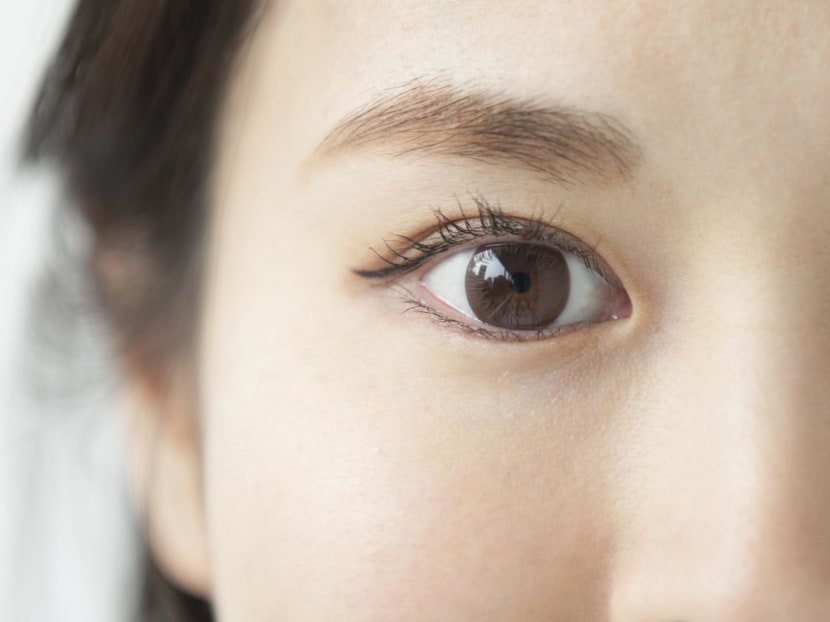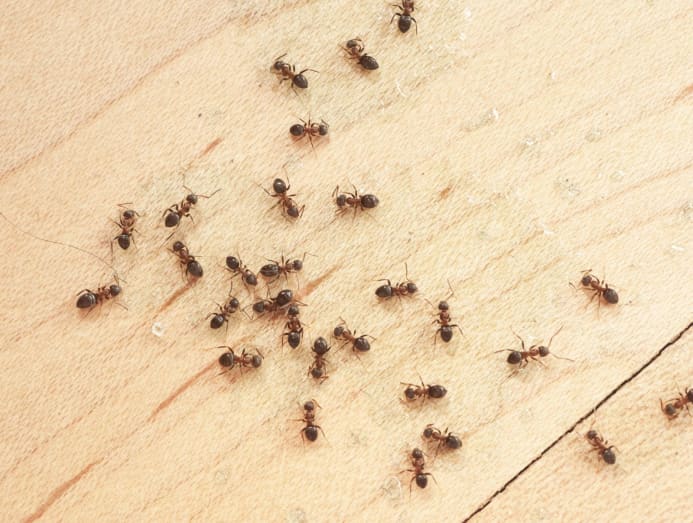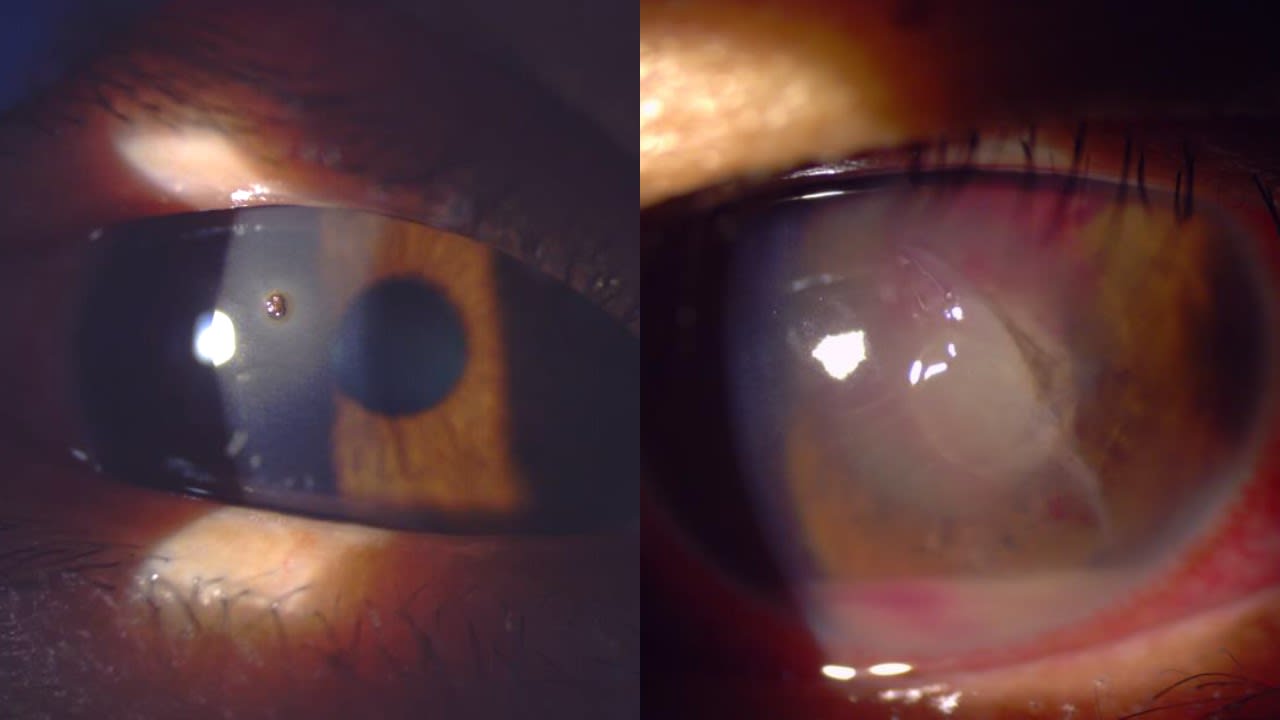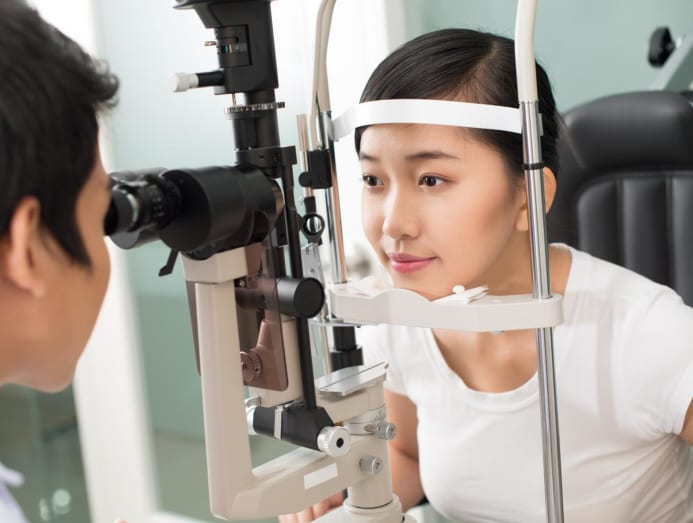What should you do if torn contact lenses or even flies and ants get stuck in your eye? (Yes, it could happen)
You could also add other eye-irritating foreign objects such as glitter, loosened eyelash extension hairs and torn novelty contact lenses to the list. Here’s what you should do about them.
Warning: Explicit images below.

Stuck contact lenses, whole or torn, are common foreign objects found in the eyes by local doctors. (Photo: iStock/kokouu)

This audio is generated by an AI tool.
Whether you’re enjoying the day outside or at home, the last thing you want is for a random insect to smack into your eye. And we’re not even talking about catching the bug in the eyelashes or eyelid but right in the middle of your pupil.
Unfortunately, that’s not an episode from Black Mirror that escalates into a cautionary tale of life and chance but real-life, eye-opening scenarios I was privy to at one of our meetings. One woman had an insect fly into her eye as she was walking outdoors.
Another woman was retrieving laundry hanging overhead when an ant decided to drop in – and landed squarely on her eye. We collectively squirmed in our seats as we heard about the wriggling legs amidst the tears and pain.
Outside of the meeting room, such encounters are also seen in the doctor’s room – and rather commonly, too. “My most memorable case was a fly that had entered the patient’s eye and its legs was embedded in the patient’s cornea,” said Associate Professor Marcus Ang, the head and a senior consultant with Singapore National Eye Centre’s Corneal & External Eye Disease Department. “We had to surgically remove the legs but this is extremely rare.”

Bugs aside, there are also inanimate objects that inadvertently find themselves stuck to our corneas. Contact lenses appear to be a popular one, according to Dr Livia Teo, a senior consultant ophthalmologist with Nobel Eye & Vision Centre, a member of Healthway Medical Group.
One such patient had sought treatment for eye irritation and a blurry vision after she thought she'd removed her contact lenses. When Dr Teo examined her, she found an entire contact lens still sitting on her cornea.
“She was very surprised when I removed it and showed it to her. In some instances, the contact lens can also tear and a fragment gets left behind,” said Dr Teo. “Those can be especially hard to remove as they are transparent and difficult to locate without special dyes that eye doctors use.”
The extent of the damage increases if the foreign object is metallic in nature, said Dr Teo, who has also seen patients with metal bits in their eyes after carrying out DIY projects at home. “Metallic flecks can become partially embedded in the cornea and will need to be removed by a doctor.” Yes, safety goggles are important; if you're still not convinced, see the images below.

With the year-end party season upon us, there just may be more opportunities for foreign objects such as renegade eyelash extension hairs, torn novelty contact lenses and rogue glitter to find their way onto your corneas. Here’s what you can do about them.
WHAT SHOULD YOU DO?
Whether the foreign object is organic or not, the most common form of damage is corneal abrasion. “In severe cases of retained foreign material, it can lead to inflammation,” said Assoc Prof Ang.
“Signs include eye redness; a ‘sandy’ sensation in the eye, especially when blinking; excessive tearing and chemosis (swelling of the tissue that lines the eyelids and the surface of the eye).”
Corneal abrasion can get secondarily infected and lead to keratitis, which is an infection of the cornea, he said.
If you were wearing contact lenses and got hit in the eye by a winged insect or flying debris, always remove the lenses immediately and rinse the affected eye with clean water, said Dr Teo. “That should be followed up with preservative-free artificial tears or lubricating eyedrops typically found over the counter.”

WHEN DO YOU SEE A DOCTOR?
If there is a blurring of vision or pain, see a doctor immediately. Otherwise, the discomfort should improve over one to two hours, said Dr Teo. “There might still be a mild sensation of irritation over the next 12 hours. However, if the symptoms do not improve or worsen, see your family doctor or eye doctor.”
WHAT PROCEDURE IS TYPICALLY DONE AT THE DOCTOR’S?
A general practitioner will use a torch to check for retained foreign bodies and corneal scratches, said Dr Teo.
At times, an ophthalmologist may be referred to to perform further assessments. In these instances, a slit-lamp microscopy examination is carried out to look for foreign bodies and examine the conjunctival fornices, said Assoc Prof Ang.
“We’ll also flush or irrigate the eye, invert the eyelids and look under the tarsal conjunctiva. And finally, exclude any corneal abrasion and evidence of infection.”

HOW LONG CAN THE RECOVERY TAKE AND WHEN CAN YOU WEAR CONTACT LENSES AGAIN?
Your affected eye should feel normal within 24 hours, said Dr Teo. “I would suggest giving the eyes a rest from contact lenses for at least 48 hours after the injury. If you feel pain or irritation when resuming contact lens wear, remove them immediately and see an eye doctor for a thorough evaluation.”
But if the discomfort or irritation persists for more than 24 hours, consult a doctor. “There could be a poorly healing scratch or retained foreign body,” she said.
“If there is a corneal abrasion, this may take up to three to five days to heal,” said Assoc Prof Ang. “We would usually prescribe some topical antibiotic eyedrops and advise against contact lens wear until the abrasion heals.”
Meanwhile, keep a bottle of artificial tears or lubricating eyedrops on you. “In case there is no access to clean water, flushing the eye with these drops can potentially mitigate the damage from the foreign body,” said Dr Teo.









